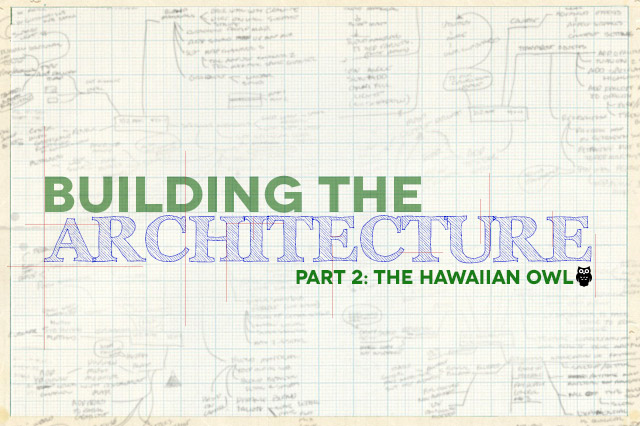Unique Value Proposition: The Hawaiian Owl
 June 12, 2013 | By Ilfusion Team
June 12, 2013 | By Ilfusion Team
Who, What, Why, and How.
Say it fast, Who-Wha-Why-and-How. What do you get? Hawaiian Owl!
In our last blog of our continuing series “Building The Architecture,” we discussed the use of Brand Archetypes in the creation of a coherent brand message. Today we highlight the purpose of the Unique Value Proposition (or “UVP”). Your Unique Value Proposition is an essential, powerful message that defines not only who you are and what you do, but identifies the central motivator for why you do it. Making a UVP is an opportunity to define what makes you different from other brands that offer similar products or services. This is the core aspect that will attract customers to a brand in the first place. Your UVP is critical to connect with your target market.
To determine your Unique Value Proposition, you must consider the 4 building blocks of the UVP formula:
• Determine what your target market is (Who)
• Formalize your business’ product or service (What)
• Isolate what differentiates you amongst the competition (How)
• Define your motivators (Why)
Much like the Hawaiian Owl, piecing together Who, What, Why, and How combine to create something special, your Unique Value Proposition. Among these brand-defining characteristics, it is the “Why” that most directly connects your target audience to purchase decisions. It is the bridge from practical need (What) and method (How) to making an emotional connection between you and your customer. These questions of What, How, and Why are extremely important to the development of your Unique Value Proposition. The most significant of the three is determining your Why, because it will be your defining feature that sets you apart from other businesses. As stated by Simon Sinek from his TED talk, “People don’t buy what you do, they buy why you do it.” Without having a clear message for what drives your company, consumers will not be invested.
The most effective and well-developed brands have invested time into discovering their “Why.” Take TOMS Shoes for example. TOMS has taken the simple entrepreneurial idea and added a philanthropic element to the mix. The “Why” from TOMS is within their slogan: “One For One.” Their brand is constantly reminding us that we are not just purchasing shoes for ourselves, but we are also giving a pair to someone else. This altruistic business model tells customers what their motivation for selling their product is. Consumers do not buy TOMS solely because they want to buy shoes, consumers buy TOMS because they want to align themselves with the message of helping others.
Ultimately, through the Ilfusion Brand Architecture, we work together to determine the elements that determine the UVP formula:
“For [Target Market] who seek [What], Business Name [How], [Why].”
We can help you discuss these considerations and determine your brand’s Unique Value Proposition, your own Hawaiian Owl. Give us a call today to learn more! 888.420.5115
Filed in: Articles, Featured, Marketing

